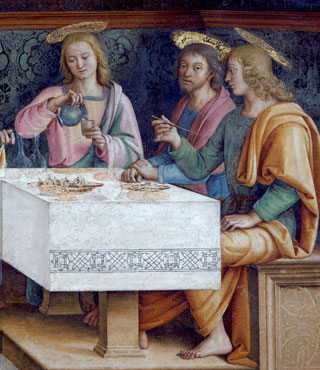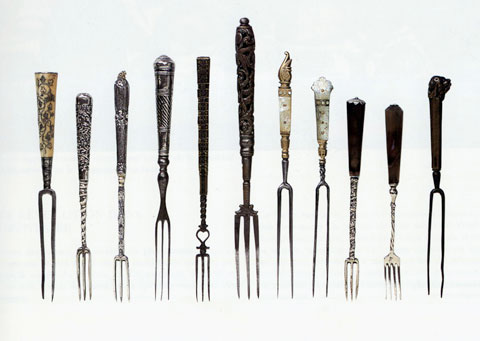

Perugino (Pietro Vannucci, known as) and assistants, Last Supper, c. 1490, detail. Florence, Monastero di Sant'Onofrio
Forks with two, three and four prongs, 16th–18th century. J. Hollander Collection
Top: Sandro Botticelli, The Story of Nastagio degli Onesti: The Wedding Banquet, c. 1483. Private collection
Forks were certainly no rarity in 15th-century Florence, home to one of the greatest courts in Italy and Europe in terms of culture, elegance and sophistication. Indeed, during the elegant banquets held by Lorenzo the Magnificent they were often used by knights and ladies. The court possessed fifty-six forks and a large number of knives and spoons.
The painting by Sandro Botticelli, The Story of Nastagio degli Onesti: The Wedding Banquet (1483), shows some members of the Medici family seated at a table spread with an immaculate cloth, holding an elegant two-pronged fork in their hands as they await their food.
Remaining in Florence, but moving away from the secular court environment portrayed in Botticelli's painting, a simplified version of the fork can be seen in Perugino's fresco of the Last Supper, painted in the 1490s in the refectory of the monastery of Sant'Onofrio. At the holy table an apostle holds a sort of simplified fork, a functional piece of cutlery for carrying the food to his mouth.

